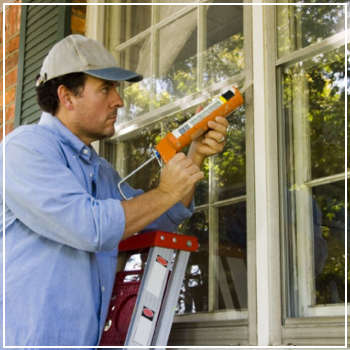Heating System Efficiency Tips for Winter
 Your heating bill went up this month, yet the house still feels cold. The thermostat reads 75 degrees, but the draft persists to the point you need to wear a sweater to feel comfortable. At this stage, is there anything you can do?
Your heating bill went up this month, yet the house still feels cold. The thermostat reads 75 degrees, but the draft persists to the point you need to wear a sweater to feel comfortable. At this stage, is there anything you can do?
Reduce the Draft
Cold outside air is likely coming through unsealed windows and door. While caulk closes gaps surrounding the frame, cold air could still be sneaking through the panes of glass – particularly if you have not upgraded to Low-E.
To close this pathway for good, use a heavy-duty clear plastic sheet or window weatherization kit and seal the edges. Complement the shield it creates with insulating curtains or drapes, which help contain a greater percentage of heat inside your home.
Seek Out and Seal Leaks
Pipes and utility lines can also create a pathway for air to enter your home and cool the interior. Consider having a professional assess your home for air leaks around pipes, recessed lights, chimneys and uninsulated areas like the attic to have them sealed off.
Watch Thermostat Use
It’s not recommended you turn off the heat at night or leave it blasting throughout the day. Rather, being efficient and strategic with your thermostat use will improve how warm your home feels.
Ideally, it’s set to a low but comfortable temperature – 68 degrees is the rule of thumb – whenever you are home and awake. If you’ll be gone several hours or going to sleep, lower the heat 10 to 15 degrees to save roughly 10 percent annually on heating and cooling costs!
Divert Heat to Common Areas
Heating your home is likely not uniform between rooms. As such, consider temporarily closing the vents in rooms you rarely use. This diverts the warmth to regularly used areas and helps reduce the amount of energy needed to heat your home.
A more modern solution, zoning systems are gaining traction among homeowners. Without closing vents, which can have a long-term effect on the pressure in your home’s HVAC system, these systems move warm or cool air wherever it’s needed most in your home. Through smart technology, it further keeps track of your home’s temperature patterns.
Practice Basic Furnace Maintenance
An inefficient furnace may be at the heart of your home’s heating woes. While in some cases the appliance needs to be replaced, poor performance nearly always comes back to lack maintenance. This time of year:
- Get your furnace running early by turning it on ahead of the season.
- Schedule a maintenance checkup to identify any potential issues before they emerge in winter.
- Replace the filter at least once a month.
- Think about water temperature in relation to outside conditions.
- Have a professional conduct a combustion efficiency test, in the event parts need to be replaced.
- Ensure all vents remain clear, especially if they’re on the floor or near a window.
- Have the return air registers cleaned out to improve circulation, efficiency and to reduce allergens in the air.
- If your home uses a heat pump, make sure that snow and ice do not accumulate around condensing units and limit air flow.
Don’t Forget About the Fireplace
Fireplaces are a great amenity for extra warmth in the winter. To reduce the amount of air escaping to the outside:
- Keep the damper closed, unless you have a fire going.
- To keep the heat contained when the fireplace is in use, open the dampers at the bottom of the firebox or crack the closest window and lower the heat to 50 degrees.
- Consider installing a heat-air exchange system to divert warm air back into your home.
- If you haven’t used the fireplace in years, consider closing off the chimney flue.
- The hearth could also be a source of heat loss. Caulk any gaps to make it more efficient.
As winter progresses, work with the professionals at M.J. Fahy & Sons to keep your home warm without high heating bills. To learn more about our HVAC services or make an appointment, contact us today.




